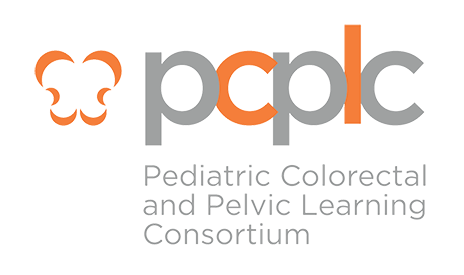ANORECTAL MALFORMATIONS
SURGERY FOR ARM
Once an anorectal malformation is identified, surgical planning for correction of the abnormality will begin. There are a few general courses for surgery, depending on the child’s anatomy.
- Incorrect location of anal opening in skin on the bottom with draining stool- In this case, considered a ‘low’ abnormality, a single operation can be performed to create an anal opening in the correct position within the anal sphincter. This procedure often occurs within a few days to few months after birth.
- Rectum does not reach the skin, but is found low near anal sphincter- This is also considered a ‘low’ abnormality and can often be performed in a single operation where an anal opening is made in the correct position, within the anal sphincter. This procedure often occurs within a few days after birth. This may also be treated initially with a colostomy (see “c” below) to allow stool to pass with the corrective surgery delayed for several months.
- Rectum does not reach the skin and is not present near the anal sphincter- This is considered to be a ‘high’ lesion. The complete surgical repair will be done in three different operations. With complex malformations such as these, the baby is allowed to grow in order to make the surgery easier and safer. First a colostomy is created. This surgery usually happens in the first day or two after birth. A colostomy connects the end of the colon to the abdominal wall skin to allow stool to pass into a pouch outside of the body. A second opening is created at this same operation and is called the mucous fistula. The mucous fistula allows the blind end of the rectum to drain fluid or mucous as needed. The child will go home to recover from this operation.
- Before the second operation, contrast will be put into the mucous fistula and x-rays will be taken to determine if a connection (fistula) to the genitourinary tract is present. Knowing where the fistula connects to the genitourinary tract and how far the blind end of the bowel is to the anal sphincter is essential for surgical planning. After this study, the second operation will close the fistula to the genitourinary tract and will create an anal opening in the correct location, within the anal sphincter. The colostomy will be left intact at this operation, and not closed, to allow for adequate healing of the new anal opening. The child will go home to recover from this operation. While at home, anal dilations (passing of a small, smooth rod into the newly created anus to gently stretch the opening) are an important part of recovery. Anal dilations help keep the newly created anus from getting narrow as it heals. Dilations are needed every day for several weeks.
- The colostomy will be closed in a third operation a few months later after the new anus has shown to be well healed.
- During this time, children may also need surgery for associated malformations. Surgical timing of both the anorectal malformation and other associated anomalies will require coordination amongst all involved surgical teams.

